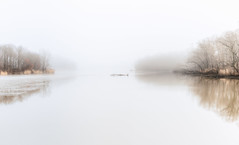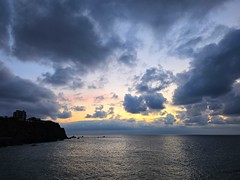Author: Larry Silver, Professor of Art History
Late spring is the perfect time to visit the Mediterranean. Wild flowers are out, and the heat and crowds of tourists have yet to build up. Consider how many ruins and outdoor experiences Turkey can offer, and you have a great recipe for a relaxing yet stimulating travel experience.
The trip to Turkey through Penn Alumni by Odysseys offered an almost perfect blend of hiking, relaxing, historic sites, and personal time for rug or ceramic shopping and the usual roster of souvenirs (even those seemed better in Turkey). The bus had internet for the rare long legs between cities!
In fact, Turkey offers much more than Istanbul, and if two days in the city on the Bosphorus was a tantalizingly brief beginning (my one disappointment, since it is such a fascinating place that I could easily stay a week), a rich variety of places and activities lay beyond. While in Istanbul, the Penn group enjoyed a boat trip on the Bosphorus and a rushed trip through the Spice Market and Grand Bazaar (but as noted above, the good shopping was yet to come…). Academic experiences cranked up on day two, with visits to the Hippodrome at the center of the city and its fabled attractions: the Blue Mosque, the Islamic Museum (in the glorious former town palace of a former pasha), the incomparable St. Sophia and its gilded mosaics, and the climax, Topkapi Palace, with hilltop views of the Golden Horn and Bosphorus. This was my turn to offer commentary on the fly and a hotel lecture on both the Byzantine and the Ottoman layers of Constantinople’s rich history.
Most of the trip took place on that comfortable, internet-friendly bus, and the moving first stop was the Dardanelles, that narrow inlet, where the tragic war memorials from Gallipoli in World War I offered a modern counterpoint to the vestiges of Troy and ancient battles across the very same strait. Our guide made an unscheduled stop at unfamiliar Assos, a small fishing village that once was the birth-place of Aristotle himself and still boasts an ancient hillside theater that was shared at sunset only with local goats.
That was the kind of experience that regularly occurred through the thoughtfulness and expertise of our guide, Aydin, a native speaker with limitless knowledge of the thicket of history that constitutes Anatolia from ancient settlements (9000 years old and upwards, which we saw on the last day in Ankara’s hilltop museum) to the modern state, founded in the 1920s by Mutstafa Atatürk (Ankara mausoleum). Aydin’s pride in his homeland was also spiced with his candor about the Islamist turn of the current prime minister, plus his sense of both the current economic boom and political balancing act between NATO/EU candidacy/Middle Eastern power broker. We heard about all of the regions of this geopolitical region, and he answered all our questions frankly and knowledgeably, sharing enthusiasm and good judgment (as well as a keen sense of where Americans were coming from) throughout the trip. He has been everywhere, but still retains his enthusiasm for sharing his homeland. The best guide I have ever had (with one competitor, in Egypt)–and if he does get his belated law degree, it will be a great loss to Turkey’s international relations, for this man could be a diplomat–or a quiz show contestant on his own country.
I do not get “ruins fatigue,” but Turkey offers so much to see in that category–more sites from the Roman Empire than Italy or anywhere else, for example–that I can see how someone else might. The roll call of where we went is impressive enough: the acropolis of Pergamon, the Ephesus of St. Paul, Perge and Antalya, where the Roman sculptures from the theater were among the best preserved and finest any-where (and I had never even heard of the place before this trip). I tried to sort it out and give some pointers for viewing and visiting enjoyment in a lecture on archaeology in Turkey, especially Hellenistic and Roman monuments. But there were also major Byzantine sites, such as the church of the real St. Nicholas in Myra and the painted cave chapels in Cappadocia in the trip extension. Layers everywhere, and so much to see, not least the shrine to Rumi, the great founder of Sufism, in Konya.
Not that such expeditions are work, but this trip also offered a relaxation component. For four nights we slept on motorized sailboats (gullets in Turkish), from which the braver of us swam in cool seas, but under sunny skies we hiked up to herding regions or abandoned monasteries or visited abandoned Greek towns from the population exchanges of 1923 (Aydin, whose own family came to Turkey from the Balkans just before World War I, would clearly like to see more of that same cultural diversity back in Turkey, but that ship has sailed…). Mostly, dividing our already small group of 16 into two parts on the boats meant that we bonded still more, sharing jokes, favorite books, personal backgrounds, and exaggerated stories, as we traded our books when we finished them. Update on technology: 3 of the couples had Kindles, and several made good use of iPads, including the camera function, which enabled instant mailing of on-the-spot postcard-like images back home.
Indeed, this was a tight-knit and cordial group by early days on the trip, and it helped that most of us were alumni of the 60s or 70s, some retired and some still very much in the office. The small size of the group and its good spirits made for a relaxed and pleasant atmosphere. Odysseys deliberately tries to keep its groups small and this one was all-Penn (except for a ringer couple from Houston), in part this time because of the sailboats. We did our part for the local economy, whether at kiosks outside the archeological parks or in the smaller towns where we stopped or else at the two big crafts stops of the trip: a rug-weaving (and selling) shop near Ephesus and a late stop at the studio of a master potter in Cappadocia. Both places were glad for our bus; we, in turn, besides the purchases, learned a lot about how Turkish carpets are woven and dyed, or how pots are thrown on a traditional wheel.
Ultimately, good food (Turkish cooking uses basic ingredients, much grilling but also fresh vegetables and fruits) and beautiful scenery will be memories that last. Our comfortable hotels ranged from the humble seaside inn of Assos to a luxury Turkish chain (Rixos) and a handsome Swissotel. In Antalya we even stumbled onto the world archery championships, while many of us sampled the heritage of a Turkish bath and massage. In Cappadocia, those of us on the extension took an exhilarating collective balloon ride over the unique, moonlike eroded landscape.
All in all, Turkey was a most memorable Penn Alumni Association trip. Small group bonding, good accommodations and guide, beautiful scenery, and a mix of physical activity and delightful indolence. Enough history and archaeology with a learned guide to feel intellectually stimulated (not to mention having a Penn art history professor around, either to help explain or to take some of the mystery out, occasionally irreverently), but not so much that you could not take time out for a chat, a read, or a shopping excursion. Add to those ingredients perfect weather most of the time, wildflowers, and no spats or injuries, and we have a lot behind our photo souvenirs to remember from two remarkable weeks in modern and ancient Turkey. Speaking as that Penn professor, I would eagerly recommend this trip to those who are interested, and I look forward to accompanying another Penn group on a trip like this one!









Pingback: My Top Penn List: Faculty Travelblogs | Frankly Penn